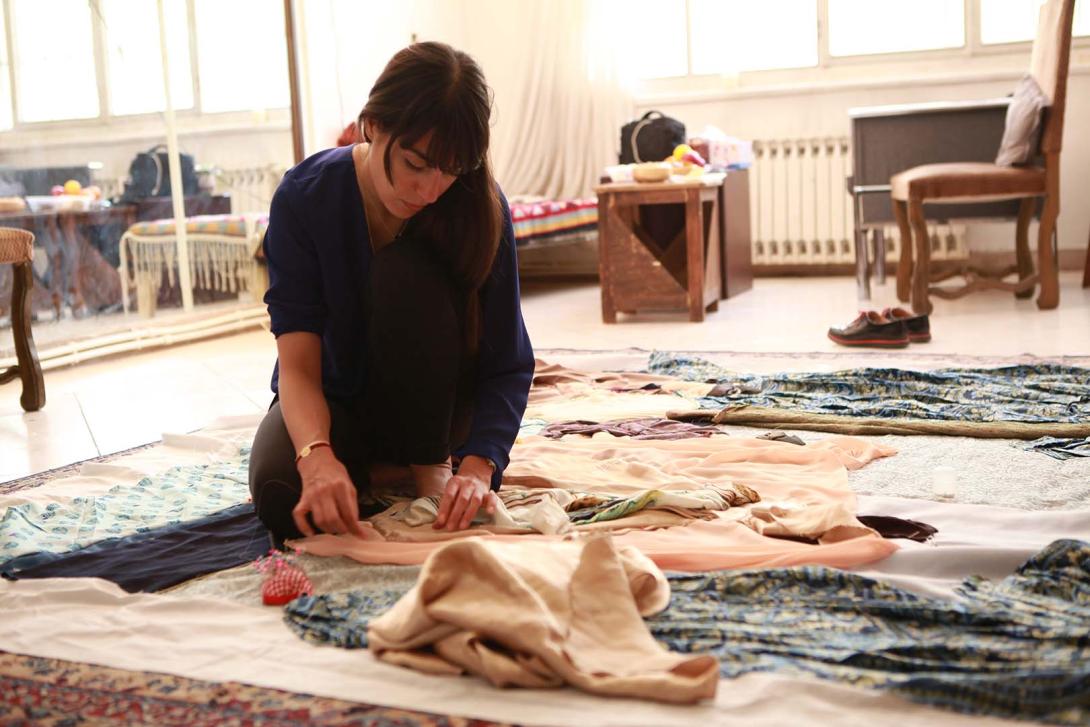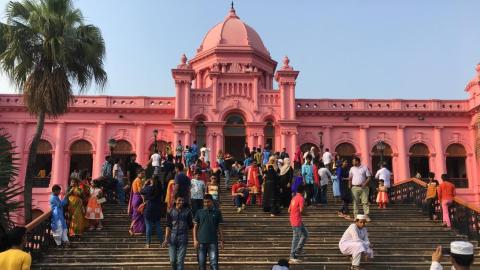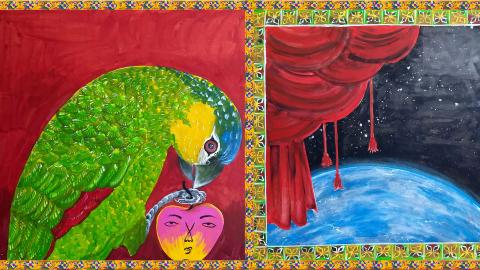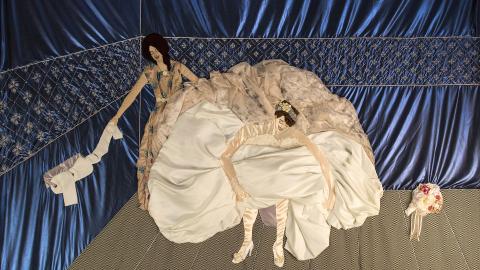Islamic Republic of Iran
By Ellie Buttrose
Artlines | 3-2018 | | Editor: Stephanie Kennard
When APT first featured Iranian artists in its sixth iteration in 2009, the United Nations Security Council sanctions against this Islamic republic made it difficult to undertake curatorial research inside the country. Artists were selected with the help of curators from the region and through viewing artists’ work in international exhibitions outside Iran. The UN sanctions were lifted in 2015, however, enabling curators from QAGOMA to travel to Iran for the first time late last year.1 Having researched from afar, and having worked directly with Iranian artists for many years (and with recommendations in hand from curators Tirdad Zoladhr and Azar Mahmoudian), we were finally able to meet and talk with artists, filmmakers, curators and writers to discover Tehran’s thriving art scene for ourselves.
In Iran, there is little support for contemporary art from the city or federal government, so it was a surprise to find that artist-run initiatives were not more prevalent. The majority of artists and dealers are based in Tehran, and the fast-paced art scene is dominated by commercial production, with limited infrastructure for critical reflection. The Ministry of Culture and Islamic Guidance closely monitors exhibitions. A focus on sales means that most art dealers change their exhibitions every two weeks, with only a few exhibiting the occasional more experimental project. Emkan Art Gallery, which runs a strong project-based program, is the exception to this rule. But only a fraction of these shows are captured in short reviews that appear in a group thread on the mobile messaging app Telegram. After our first few days in Iran, we were left wondering what material art historians of the future will be able to access about the current Tehrani art scene.

Zahra Imani working in her studio / Image courtesy: The artist
A partial answer was found with curator Sohrab Kashani, who has been compiling catalogues, essays and posters in his library and making them publicly available through his independent initiative Sazmanab. Mr Kashani is the Artistic Director of the recently established Pejman Foundation, where he is also building a library. Founded in 2015 by collector Hamidreza Pejman, the foundation held its first major exhibition in 2017. Programming is spread across three sites, making it a large-scale player in Tehran’s contemporary art scene. We are keen to return to see how its presence will affect the wider arts community in the coming years.
Operating on a more modest scale is the non-profit space New Media Society. Since 1998, through screenings, talks and residencies, it has fostered engaged artistic discussions, using Skype to connect with speakers outside Iran. While the energetic Delgosha Gallery is a mix of artist-run initiative and commercial gallery, the director and artist Shabahang Tayyari spoke to us about the importance of providing a space for younger and more experimental practices. Artist and curator Samira Hashemi — who, with Mona Aghababee, runs Va Space, a non-for-profit gallery and residency space in Isfahan — gave us some insight into the scene outside the country’s capital.
The wealth of public museums are dedicated to the country’s rich history of visual arts, including the extraordinary Museum of the Islamic Era. In 2009, the expansive APT6 film program ‘The Cypress and the Crow: 50 Years of Iranian Animation’ included Boz Bazi (Boz Game) 2007 by Moin Samadi. This short animation references a 5000-year-old earthenware goblet that depicts a goat leaping to eat the leaves off a tree through a series of sequential painted scenes. The original goblet, on display at the Museum of Ancient Iran, is unusual in that the images of the goat standing, jumping in mid-air, and then biting the top of the tree provide a sense of time and movement, serving as an early example of proto-cinema.
An earthenware goblet on display at the Museum of Ancient Iran / Photograph: Jose Da Silva
Another highlight of the research trip was the Tehran Museum of Contemporary Art (TMOCA). As well as being an architectural destination, the museum houses an internationally renowned but rarely seen collection acquired by Farah Pahlavi, wife of the last Shah of Iran, prior to the 1979 Islamic Revolution. After a six-year hiatus, the Tehran International Sculpture Biennial was held at TMOCA during our visit; standout works included a history of the museum’s Donald Judd sculpture by Homayoun Askari Sirizi, and Barbad Golshiri’s installation of ephemeral grave markers.
We ended our time in Tehran with a visit to artist Monir Shahroudy Farmanfarmaian, who was preparing for the opening of the Monir Museum at the University of Tehran in December last year. The nonagenarian artist has donated more than 50 artworks to the museum. We were delighted to see on the wall of Mrs Shahroudy Farmanfarmaian’s studio a picture of her APT6 commission Lightning for Neda 2009, now in the Gallery’s Collection, which the artist still considers one of her finest works. This research trip was hopefully the first of many visits to Iran that will build ongoing relationships with artists, enabling us to commission internationally significant pieces by leading Iranian artists for future iterations of APT.
Ellie Buttrose is Curator, International Contemporary Art.
Endnote
- With José Da Silva, former Curatorial Manager, Australian Cinémathèque.


